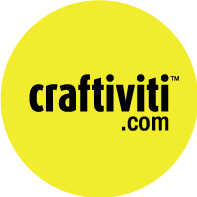The photos below are compliments from Chris Tan, a local customer on his project using Craftiviti Moldmaker RTV Silicone Rubber.
Chris started with building a base out of Craftiviti Industrial Styling Clay. This clay contains no sulphur and is therefore safe to use with the Moldmaker RTV Silicone Rubber. In a nutshell, anything with sulphur will cause the RTV Silicone not to cure.
In the photo above, Chris brilliantly built the clay within a plastic tray hence eliminating the work needed to build 4 walls around the mold. Walls are essential in keeping the liquid silicone in.
Next, Chris embedded his master objects. In this case, the master was a set of unique dices. Chris was careful to embed only half the dice. You can see how securely the clay grips onto the dice. Chris sprayed a layer of Silicone Release Agent on this master so that the master will not stick to the liqiud silicone rubber.
Next, Moldmaker RTV Silicone Rubber is mixed with the hardener. This step is crucial.
Mixing Ratio: 2.5%-3% hardener to the weight of the silicone rubber.
So if you have 100g of Moldmaker RTV Silicone Rubber, you only need approximately 3g hardener. A dripper or pipette is the best measuring tool for this and a very sensitive weighing scale too. Once you get more familiar with our Moldmaker RTV Silicone Rubber, you can roughly gauge 3g as 3ml.
This mixture needs to be stirred well and poured SLOWLY onto the master to avoid bubbles forming. To encourage more bubbles to be released, just tap the mold.
Chris left this mold overnight to cure.
The next day, the cured Silicone Rubber peels right off the mold. In the photo below you will see how well the silicone rubber emulates the master.
Notice how well the Moldmaker RTV Silicone Rubber captures even the faintest detail including the shallow numeric on each dice.
This is the first part of the mold. Now onto part 2.
For part 2, Chris uses the 1st part of the mold with the dice. Again he builds a wall using Craftiviti Industrial Styling Clay.
In the photo above, you will notice shiny liquid on the surface of this master. The liquid is a silicone-to-silicone brush-on liquid. Just brush on the liquid, allow to dry and repeat 3 to 4 times. You NEED TO DO THIS because silicone and silicone LOVE each other and will stick firmly together. This love is definitely NOT what you want in a 2 part mold.
Repeat the mixing and pouring of the Moldmaker RTV Silicone Rubber.
The end result is a large two part mold slab that is ready to use.
Thank you Chris for sharing!
Email us if you have any enquiries at enquiry@craftiviti.com or pop by our store at 10 Boulevard, Petaling Jaya, Malaysia.
If you found this post useful, please join us on Facebook for more updates and demos!





